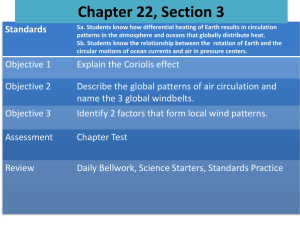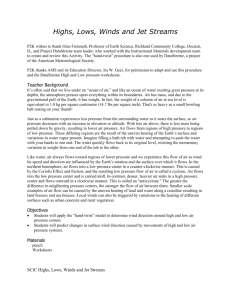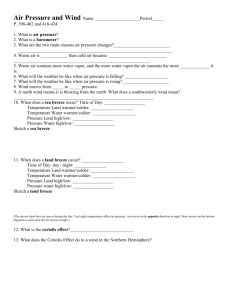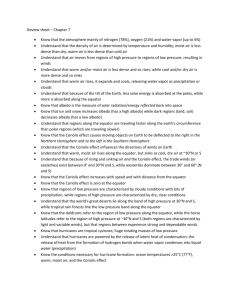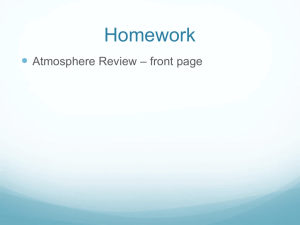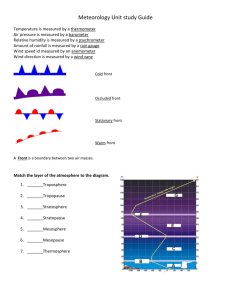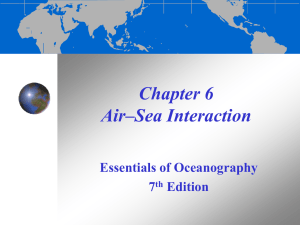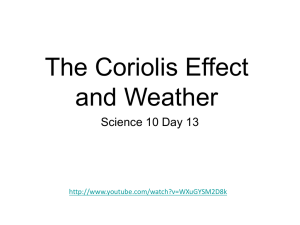File winds
advertisement
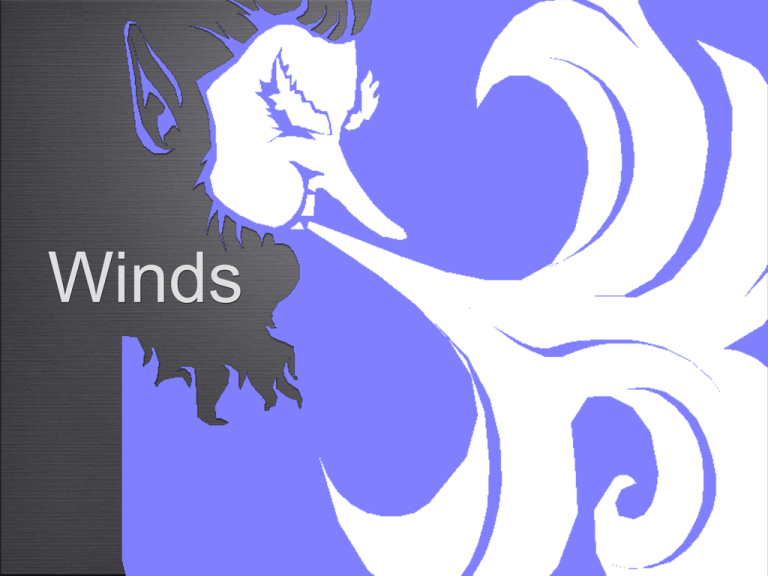
Winds Different areas of Earth receive different amounts of the Sun’s radiation. • This unequal heating of the Earth causes differences in air pressure. Warm, less dense air rises forming an area of low Pressure Cold, dense air sinks and creates an area of high pressure • Wind is the movement of air molecules from an area of high pressure to an area of lower pressure • Warm (tropical) air rises and cold (polar air) sinks to form patterns of wind called wind cells. • Scientists use a model that has 3 wind cells • All three wind cells exist on both sides of the equator, in the northern hemisphere and the southern hemisphere. The Coriolis Effect The deflective effect of the earth's rotation on all freemoving objects, including the atmosphere and oceans. Gaspard-Gustave de Coriolis, 1835 Coriolis Effect (Northern Hemisphere) coriolis (n.hemisphere) A plane flying from Anchorage, Alaska directly toward Miami, Florida would miss its target due to the Coriolis effect. The target location where the plane was headed when it took off has moved with Earth's rotation, so the plane would end up to the right of its original target. Coriolis Effect (Southern Hemisphere) coriolis (s. hemisphere) A plane flying from Tierra del Fuego, Argentina directly toward Rio de Janeiro, Argentina would miss its target due to the Coriolis effect. The target location where the plane was headed when it took off has moved with Earth's rotation, so the plane would end up to the left of its original target. In reality, pilots take the Coriolis effect into account so they do not miss their targets Global Winds Patterns of air circulation caused by the combination of convection currents (wind cells) and the Coriolis Effect. Surface winds: • Winds between pressure zones are named for the direction that they come from. • There are 3 main wind systems. Trade Winds • Blow from 30˚ towards the equator (East to West) • warm and steady in both direction and speed • provided regular trade routes for sailing Prevailing Westerlies • Blow west to east between 30˚ to 60˚lattitude in both hemispheres; in the opposite direction of the trade winds. Polar Easterlies • Blow east to west between 60˚ to 90˚lattitude in both hemispheres. Near the equator, very little wind and daily rain patterns called the doldrums High Altitude Winds • Jet Stream: narrow belt of air in the upper troposphere which moves eastward at high speedusually in middle latitudes • height range: 6,000-12,000 meters, speed: 150-300 knots • dips account for cold polar air in US during winter • related to strong thunderstorms in spring & summer • used by planes to assist with eastbound flights Jet streams move faster in the winter. Moves storm systems across the country. Local Winds Winds that are caused by local geographic features. Land & Sea Breezes • during day, land heats faster than water, and generates a sea breeze: cool breeze blowing from the ocean to replace the rising warm air from land • at night, land cools faster than water and generates a land breeze (opposite of above) Land Breeze Sea Breeze Mountain & Valley Breezes Caused by change in Temperature and elevation

